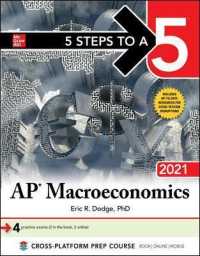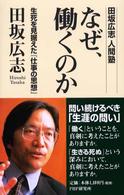- ホーム
- > 洋書
- > 英文書
- > Literary Criticism
Full Description
What were the consequences of Tolstoy's unusual reliance on members of his family as source material for War and Peace? Did affection for close relatives influence depictions of these real prototypes in his fictional characters? Tolstoy used these models to consider his origins, to ponder alternative family histories, and to critique himself. Comparison of the novel and its fascinating drafts with the writer's family history reveals increasing preferential treatment of those with greater relatedness to him: kin altruism, i.e., nepotism. This pattern helps explain many of Tolstoy's choices amongst plot variants he considered, as well as some of the curious devices he utilizes to get readers to share his biases, such as coincidences, notions of "fate," and aversion to incest.
Contents
Acknowledgements
Introduction: Aesthetic Kin Altruism
1. Background and Overview
2. Family Structures
3. Kin Altruism
4. Names and Family Traditions
5. Writing the Novel with the Family
6. The Problem with Prototypes
7. Genetic Allies
8. Unrelated Family Associates
9. Distant Relatives
10. Tolstoy's Grandparents
11. Tolstoy's Parents
12. The Parents' Marriage
13. What about Sonya?
14. A Genetic Clash-and Inclusive Errors
15. Incest Avoidance
A. Actual Brother-Sister/Parent-Child (50% Relatedness)
B. Avuncular (25% Relatedness)
C. Cousins (12.5% Relatedness)
D. First Cousin Once Removed (6.25% Relatedness)
E. Second Cousin (3.125% Relatedness)
F. Affinity (0% Relatedness)
G. The Westermarck Effect (0% Relatedness)
16. Self-Altruism
17. Kin Altruism Reconsidered
Bibliography
Index







